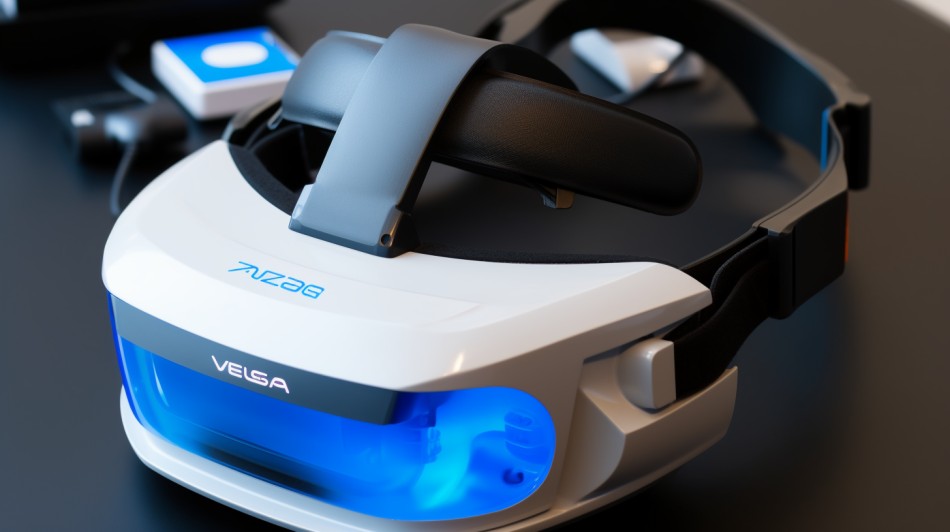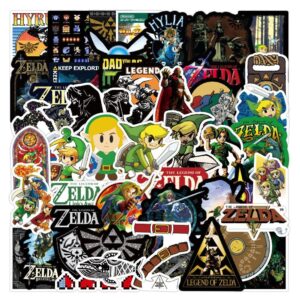Leading Up to the Dreamcast Announcement
Sega’s consideration of a successor to the Sega Saturn began even before the console’s release. Talks with Nintendo for a CD-based add-on fell through, and Sony’s unveiling of the PlayStation in 1993 caught Sega off guard. Concerned about Sony’s 3D-focused hardware design, Sega contemplated continuing with the Saturn, upgrading it, or developing a new console. Rumors of a potential “Saturn 2” emerged, fueling speculation about an add-on or replacement within a few years.
Virtuality, a company working with Sega, developed a virtual reality headset, the Mega Visor Display. It was initially called “Dreamcast” and planned an online network feature. While the exact details are unclear, Sega had multiple projects in progress at the time, including a £3.5 million contract with Virtuality.

Sega’s collaboration with Lockheed Martin on the Saturn 2 project focused on enhancing graphical power. However, tensions grew, and Lockheed Martin’s rejected hardware designs led to the termination of their partnership. Sega also explored partnerships with NVIDIA, whose NV1 video card was based on the Saturn’s hardware, and later the NV2 project. Despite these efforts, the Saturn 2 and subsequent projects, like Eclipse and M2, were ultimately abandoned.
Development of the Dreamcast
In the mid-1990s, Sega began considering a new console to succeed the struggling Sega Saturn. They explored collaborations with companies like Lockheed Martin, The 3DO Company, Matsushita, and Alliance Semiconductor to develop a new graphics processing unit. These efforts were separate from the eventual development of the Dreamcast console.
In 1997, Sega enlisted IBM’s Tatsuo Yamamoto to lead a team working on a secret project codenamed “Blackbelt.” Around the same time, another team led by Hideki Sato started developing the Dreamcast hardware. The two teams made different choices regarding hardware components, with Yamamoto’s team opting for 3dfx graphics processors and Sato’s team selecting the Hitachi SH-4 processor and PowerVR2 graphics processor manufactured by NEC.
After deliberation, Sega chose the SH-4 and PowerVR architecture, leading to the project being renamed “Katana.” This decision caused concern for Electronic Arts, as they had invested in 3dfx and were unfamiliar with PowerVR. The Dreamcast’s design took a different approach from the Saturn, utilizing subsystems closer to personal computers, reducing costs. It featured a modular modem and adopted the GD-ROM media format developed by Sega and Yamaha.
Despite initial setbacks with the Saturn, Sega retained the name and established the Dreamcast as their new gaming brand.
Microsoft developed a custom version of Windows CE for the Dreamcast, making it easy to port PC games. The console was officially revealed as the Dreamcast in 1998, with Sega investing heavily in hardware development, software development, and worldwide promotion. Despite initial setbacks with the Saturn, Sega retained the name and established the Dreamcast as their new gaming brand.
Announcing the “Katana” Project
In early 1998, the Dural project was publicly revealed as “Katana” as Sega Saturn’s popularity declined. With Electronic Arts withdrawing support for the Saturn and Western versions of X-Men vs. Street Fighter becoming unlikely, Sega Europe set a target release date for a new console in 1999. Initially, Sega planned to use 3Dfx hardware in the upcoming console but later switched to Sato’s PowerVR-based design. Conflicting reports arose regarding the power comparison between “Katana” and “Black Belt.” Sonic Team’s Yuji Naka claimed that 3Dfx’s Voodoo cards were less powerful than the Katana console, while some speculated that Microsoft influenced Sega’s decision to back the NEC-backed project.

Sega’s decision to abandon 3Dfx caused disappointment and resentment, particularly in the US, as it led to job losses at Sega of America. Electronic Arts, a long-time Sega partner and investor in 3Dfx, was puzzled by Sega’s choice. Sega’s investment in 3Dfx allowed them to secure the technology behind the Black Belt project to prevent competitors from using it. However, 3Dfx filed a lawsuit against Sega and NEC, alleging they had been misled and deprived of confidential materials. The lawsuit was eventually settled, with Sega paying $10.5 million to 3Dfx.
Sega faced troubles with Electronic Arts as they couldn’t meet the terms of a proposed agreement, leading to a Dreamcast without EA’s support. Leaked details about the Katana project and the “NAOMI project” (a Sega Model 3 arcade replacement) emerged, including concepts of memory cards, built-in screens, and a modem. The US launch of the Dreamcast faced delays, with the release date moving from Christmas 1998 to September 1999. Development kits were sent to select developers, receiving high praise for the hardware. Several publishers, including Electronic Arts, initially planned to bring games to the system during this period.
Dreamcast Launch
The Dreamcast’s launch in Japan faced initial supply issues due to a shortage of PowerVR chipsets, resulting in Sega stopping pre-orders. When it was finally released on November 27, 1998, the stock sold out quickly, but only one of the four available launch games, a port of Virtua Fighter 3, performed well. Sega estimated that additional units could have been sold with sufficient supply. Seaman, released in July 1999, became the Dreamcast’s first major hit in Japan. Sales in Japan fell short of expectations, with fewer than 900,000 units sold by February 1999.
In North America, Sega faced challenges before the Dreamcast’s release as EA announced it would not develop games for the console. However, Sega repaired relationships with major retailers, securing pre-orders for 300,000 units. The Dreamcast launched on September 9, 1999, and achieved record-breaking sales, selling over 225,000 units in 24 hours and surpassing 500,000 units within two weeks. Significant launch games included Sonic Adventure, Soulcalibur, and NFL 2K.

The Dreamcast was released in Europe on October 14, 1999, and sold 400,000 units by November 24. Sales reached 500,000 units by Christmas 1999. The price was later reduced to £149.99. In Australia and New Zealand, the launch faced problems with console shortages, limited game availability, and delays in securing internet compatibility. Sales were lackluster due to these issues, a lack of advertising, and a high price point.
Competition
The PlayStation 2 (PS2) posed tough competition for the Dreamcast. Sony’s dominance in the video game market with the PlayStation and the impressive specifications of the PS2 threatened the Dreamcast’s position. The PS2 boasted higher polygon rendering capabilities, DVD-ROM format, and backward compatibility with PlayStation games. The launch of the Dreamcast in the US coincided with the announcement of Nintendo’s GameCube and Microsoft’s Xbox, intensifying the competitive landscape.
Dreamcast sales in the US began declining in early 2000, contributing to Sega’s consecutive annual losses. Sega faced challenges due to poor Japanese sales, investments in Western markets, and declining profitability in its Japanese arcade business. To prepare for the PS2 launch, Sega of America focused on the US market and launched SegaNet, an internet gaming service for the Dreamcast. However, Dreamcast sales fell short of expectations despite aggressive pricing strategies and advertising efforts.
Sega’s financial losses continued to mount, and the company struggled to compete against Sony and Nintendo in the US video game market. The lack of availability of the PS2 further impacted Dreamcast sales, with consumers opting to wait for the highly anticipated PlayStation console. Sega’s market share dwindled, and the revenue from Dreamcast software alone was insufficient to sustain the platform.
In the face of fierce competition, Sega’s Dreamcast ultimately struggled to maintain viability in the market.
Decline
Challenges and strategic decisions marked the Dreamcast’s decline. Despite strong sales initially, Sega faced ambitious financial targets set by its Japanese headquarters. Significant revenue and hardware unit goals had to be achieved to meet these targets. However, the Dreamcast fell short of these expectations, prompting Sega to make difficult choices.

On January 31, 2001, Sega announced the discontinuation of the Dreamcast after March 31, signaling the company’s exit from the hardware business. The decision was driven by financial considerations and a desire to focus on software development. Sega implemented price reductions to clear unsold inventory and offered the final Dreamcast unit as a commemorative item.
Under the leadership of Okawa, Sega’s president, the company underwent restructuring and transitioned to a platform-agnostic third-party developer. Okawa’s financial support, including forgiving Sega’s debts and returning his stock, played a crucial role in Sega’s survival.
Despite the Dreamcast’s discontinuation, commercial games continued to be released for the console, particularly in Japan. Sega repaired Dreamcast units until 2007, and independent developers continued to create games in the MIL-CD format. Sega eventually posted a profit in the fiscal year ending March 2003, marking a turning point for the company.
The announcement of Sega’s exit from hardware was met with optimism, as many believed the company’s creative potential would thrive as a software developer. Industry insiders and enthusiasts celebrated Sega’s rich history of innovative games and looked forward to its continued success across various platforms.
The legacy of Sega’s under-appreciated cult classics and talented development teams continued to resonate, and the company’s shift towards software development allowed them to focus on what they did best—creating engaging and memorable gaming experiences.














